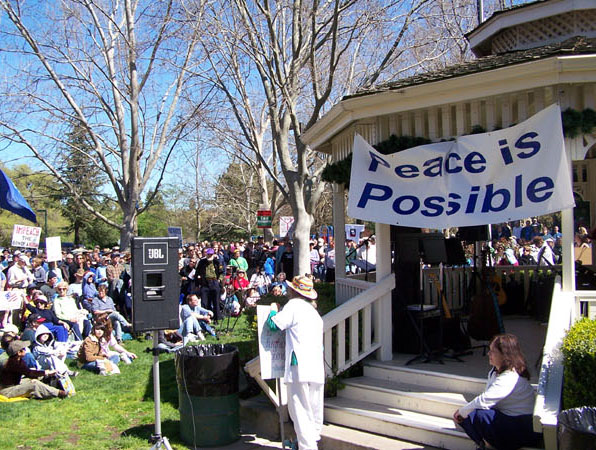“Divine Strake”and the talk of a nuclear attack on Iran
Andrew Lichterman
There have been two related sets of news stories in the past week involving nuclear weapons. Seymour Hersh, writing in the New Yorker, and the Washington Post ran stories regarding planning for a possible use of nuclear weapons in an attack on Iran. The reported rationale for considering nuclear weapons use is that some underground Iranian facilities might be difficult to destroy with conventional weapons. A scattering of newspapers have reported that a large conventional test explosion called “Divine Strake,” planned for June at the Nevada Test Site, will simulate nuclear weapons use. One purpose of the program of which that test is a part, according to Department of Defense budget documents, is to “develop a planning tool that will improve the warfighter’s confidence in selecting the smallest proper nuclear yield necessary to destroy underground facilities while minimizing collateral damage.”
Both reports subsequently were denied by government sources. Nonetheless, It is virtually certain that they are to a large extent true. There undoubtedly are plans being prepared for possible attacks on Iran, and that process likely includes examining (if not choosing) nuclear options for hard to destroy facilities. All the evidence except the government denials themselves suggests that data from the “Divine Strake” test will be used to refine understanding of nuclear weapons effects on underground structures, and that such understanding will be incorporated into the tools and procedures used to plan and execute nuclear strikes (In a previous post I provided a summary of the Divine Strake coverage, including government denials and responses to them).
What is important is what these two chains of events mean. They can be understood along a continuum that ranges from the normal grinding along of an immense military apparatus that always is refining its understanding of nuclear weapons and always is preparing contingency plans to attack a variety of potential adversaries, to danger signs of a near-term attack on Iran that could involve nuclear weapons use if certain factions within the government have their way. I would place these events somewhere in the middle of this range, with nuclear weapons use still highly unlikely but some kind of attack on Iran growing steadily more likely, although not on the immediate horizon. This is an extraordinarily secretive administration, making its intentions difficult to discern. It is also a very fluid political moment domestically, with an ongoing constitutional crisis that evidently is viewed by the incumbent government mainly as a political problem to be managed using all the tools at its disposal, which could include the distraction of a conveniently timed, and, from its perspective, “manageable” use of military force. This is a government that has shown itself willing to roll the dice, and it may include dominant elements (and not only in the Executive branch) who believe that the worst outcome– widespread war in the Middle East and Persian Gulf region and some measure of global economic chaos– will one way or another allow it to consolidate an increasingly autocratic form of rule. (more…)













